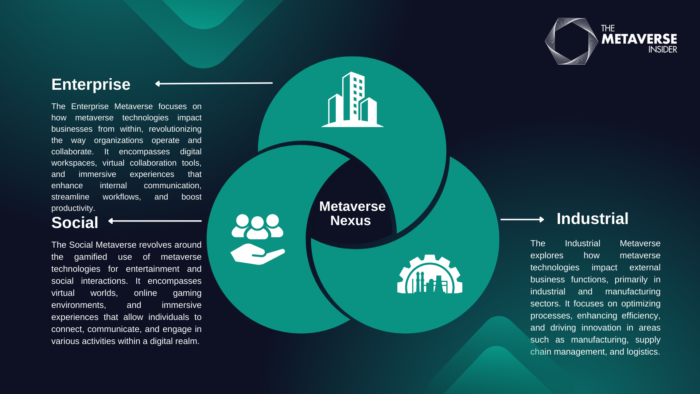Augmented reality stocks are becoming an increasingly popular avenue for investors looking to capitalize on emerging technology, projected to reach a value of over US$130 billion by 2026.
In this article, the different categories within the augmented reality market are explored with the best AR stocks to consider investing in. From value-adding platforms like Google and TeamViewer to AR hardware manufacturers like Vuzix and Microsoft, we cover the companies at the forefront of the AR industry with their growth potential. Rounding it out with the risks and future developments we expect to see in AR. Whether you are a seasoned investor or new to the market, this article provides a valuable launch into the world of augmented reality stocks.
Next, the article is structured into easily navigable sections, enabling you to jump to the eleven listed top AR stocks for 2024. However, we recommend reading the supplemental parts describing the different markets in augmented reality as it will enable you to make better-informed investment decisions.

Finally, this article is not to be considered investment advice. No certainty is guaranteed with forecasts or predictions made. Instead, this article is a guide for you to look deeper into the AR markets and stocks that resonate with you.
Augmented Reality Stocks summary table
| Name | Stock Exchange | Current AR Market(s) | Forecasting |
| Alphabet Inc (GOOG) | NASDAQ | AR Glasses
AR Hardware & Innovation |
To be the industry standard operating system for AR Glasses. |
| Apple Inc (AAPL) | NASDAQ | Mixed Reality Headset
AppAR App Store |
A release of a more affordable mixed reality headset.
A new AR Glass targeting consumers and enterprises. The development of an AR App Store. |
| Meta Platforms (META) | NASDAQ | AR Innovation
Mixed Reality Headsets Development platforms for AR App & Games Store for Mixed Reality |
Meta is still projected to adhere to its consumer AR Glasses roadmap starting in 2024. |
| Qualcomm (QCOM) | NASDAQ | SoCs for Mixed Reality Headsets
SoC for AR Glasses Development platforms for AR Glasses and AR Headsets |
Due to increased in-house processing from OEMs, Qualcomm is expected to pivot to software development platforms. |
| Microsoft (MSFT) | NASDAQ | AR Headsets
AR Development Platforms |
Continue AR Headset specialization (Industrial, Cleanroom), while focusing on AR enterprise software platforms. |
| Magic Leap | – | AR Headsets
AR Development & Productivity Platform |
We expect Magic Leap to become an IPO in the next couple of years. |
| NVIDIA (NVDA) | NASDAQ | AR Development & Productivity Platform | Implement its quantum computing simulation GPUs called cuQuantum, and AI platforms to improve its AR Development & Productivity Platform |
| Unity Software Inc (U) | NYSE | AR Development & Productivity Platform for both consumers and enterprises | Continuing to be the premier app and games platform for AppAR. |
| Digilens | – | AR Glass waveguide optics manufacturer | Digitlens will soon release an AR Glass for enterprises and industries.
We further expect DigiLens to become an IPO in the next few years. |
| Vuzix Corp (0LRL) | LON | AR Glass innovations
Enterprise AR Glasses In-house AR Glasses waveguide optics |
Continue to develop and recoup its R&D into enterprise AR Glasses, cementing them as one of the leading providers of enterprise AR Glasses. |
| TeamViewer SE | ETR | Enterprise AR Glass productivity & collaboration platforms | Continuing to develop its enterprise AR Glass platforms with AI, enjoying the growing market value of the enterprise and industrial AR uses |
What are augmented reality stocks?
AR stocks are ownership pieces of publicly listed companies that directly or indirectly are involved in augmented reality – see the different market definitions above. These pieces of ownership follow a supply and demand methodology, delineating their value and price per share. That means the more stocks a company has, the lower its price (the supply). Oppositely, the more popular a stock is, the higher its price (the demand). The latter is dictated by internal matters for the company, such as financial health, how the primary and secondary AR markets perform, and much more.
With that in mind, what are the best AR stocks to consider?
11 Best augmented reality stocks
1. Alphabet Inc (GOOG): NASDAQ
Alphabet, or more commonly Google, is rumored to develop a dedicated operating system for AR Glasses akin to Android. And in line with the search giant’s AR OS, Google is also said to be tinkering with an AR Glasses app store. However, Google recently closed its consumer AR Glasses development, either reminiscing about its troubles during Google Glass in 2014 or as a side effect of tightening the screw with the recent layoffs in the broader technology industry. Another clear indicator of Google’s distance from AR hardware is Google Glass Enterprise, an AR Glass for the Industrial and Enterprise Metaverse that will be discontinued in the Fall of 2024. Yet, the company still resides over the moonshot project Starline, acting as a sit-in AR booth, yielding awed first impressions and expected to pave the way for immersive telepresence in the Enterprise Metaverse.
2. Apple Inc (AAPL): NASDAQ
Without any augmented reality hardware – Apple is the most valued AR company from their app store, acting as the quintessential marketplace for AppAR. So only by that metric Apple should be on your list. Yet, Apple became one of the dominant augmented reality stocks when it recently announced its premium mixed reality headset, Apple Vision Pro. With the release of this headset in early 2024, expect a notable increase in AR for Apple. In fact, Apple’s Spatial Computing doctrine falls squarely in the augmented reality category.
3. Meta Platforms (META): NASDAQ
While Google closed its AR Glasses plans, Meta is still aiming to release multiple consumer-facing AR Glasses rumored to start next year. Even if these leaks or AR Glasses roadmap changes, Meta is a pivotal part of the Metaverse Nexus with the Horizon Worlds virtual world and Enterprise Metaverse platform Horizon Workrooms. While the social media giant also is pushing immersive hardware innovations through RealityLabs and is one of the central pillars of a growing retail category called Immersive Commerce through Instagram AR filters offering use cases such as virtual try-ons of products. Finally, Meta also offers Meta Spark Studio, an AR development toolkit enabling developers to create AppAR experiences.
4. Qualcomm (QCOM): NASDAQ
Qualcomm is the leading supplier of chipsets in standalone virtual reality headsets. Yet, when it comes to AR, Qualcomm is pushing the charge through the XR development platform Snapdragon Spaces and the end-to-end XR platform Snapdragon® XR2 Gen 1. Furthermore, the American chip manufacturer released their new processing infrastructure for consumer and industrial AR Glasses called Snapdragon® AR2 Gen 1. The one caution thrown into the virtual wind is the System-on-Chip market is challenged by original equipment manufacturers (OEMs) developing proprietary processing like Apple’s Silicon.
4. Microsoft (MSFT): NASDAQ
Microsoft has shifted gears from immersive hardware to software infrastructure of the Enterprise and Industrial Metaverse. In fact, Microsoft has numerous productivity platforms like Azure Digital Twins and Microsoft Mesh. It seems Microsoft is pivoting to a specialization manufacturer with its HoloLens 2 AR Headset available in versions for industrial Cleanrooms and the US Army.
6. Magic Leap
One of the companies that defined and pushed AR to the mainstream was Magic Leap, garnering a respected status in the industry. And while Magic Leap is still in Series D, with a recent controlling stake claimed by Saudi Arabia’s sovereign wealth fund fueling its pivot to the Enterprise and Industrial Metaverse, we expect Magic Leap to become an IPO soon. Further, Magic Leap recently released the most powerful AR Headset, Magic Leap 2, while seeing its competition easing from Microsoft’s exit in AR hardware.
7. NVIDIA (NVDA): NASDAQ
Speaking of providing the software infrastructure of the Industrial and Enterprise Metaverse, NVIDIA is uniquely positioned to release an AR-specific SoC from its GPU expertise while also taking advantage of its advancements in generative AI. But more importantly, NVIDIA was early in establishing a leading presence with NVIDIA Omniverse, becoming one of the go-to real-time 3D (RT3D) platforms used notably in industrial digital twins.
8. Unity Software Inc (U): NYSE
Speaking of software development platforms, where Omniverse leads the charge of the Industrial Metaverse, Unity does so with the Social Metaverse being the premier game engine for AppAR experiences. However, Unity is gaining ground in the Enterprise Metaverse with Unity Forma, enabling companies to build XR digital objects central to the practical functionality of augmented reality. We are also seeing digital twin cities, such as Orlando, Florida, developed using Unity.
9. Digilens
Pivoting from downstream in the AR value chain to upstream, DigiLens is one of the leading optics manufacturers for AR Glasses called waveguides. And while the American AR lens manufacturer is still in Series D, enjoying prominent investors such as Samsung, Sony, Panasonic, and Niantic, we are soon likely to see DigiLens becoming an IPO. We say this because waveguides for consumer and industrial AR Glasses will continue to grow in adoption as use cases continue to prove significant value like AR Remote Maintenance, Repair & Inspections. DigiLens is even entering the Industrial Metaverse with its own pair of AR Glasses called Argos.
10. Vuzix Corp (0LRL): LON
While the AR Glasses manufacturer Vuzix is in financial struggles with their negative net profit margin, return on equity, assets, and investments, the company is a legacy XR player going back three decades and headed by the XR veteran Paul Travers. Further, the financially dire straits of Vuzix means its stock price is affordable, and once the Industrial Metaverse matures, we will experience the American AR Glass company turn a corner. Finally, the only significant competitor to Vuzix is RealWear which is still in Series C, with the Google Glass Enterprise AR Glass exiting the market later this year.
11. TeamViewer SE (TMV): ETR
This brings us to the last highlighted AR stock, TeamViewer, which offers AR remote collaboration platforms and telepresence solutions to the Industrial and Enterprise Metaverse. And while TeamViewer’s stock has remained stagnant for almost two years, they reside over powerful AR productivity and remote collaboration tools. In fact, we expect the maturing of the Industrial Metaverse to impact positively on TeamViewer and see its stock increase as a result. Finally, TeamViewer’s only prominent competitor is Wideum in the Series A funding phase.
Now that you are acquainted with the AR stocks to keep your eyes on, how do you follow and analyze them?
What does the augmented reality market look like?
The augmented reality (AR) market is outlined in numerous ways.
The general definition of AR aggregates all its subcategories under the AR sun into one. And while it is valuable to follow the general trajectory of this broader AR market, the catch is in the details. Thus, there are three categories under augmented reality, where each acts as its own total addressable market, further intricately linked to its use cases which also can be its own market.
But let’s briefly cover the high-level definition of AR and funnel it down into specifics. Each, from high level down to the weeds, acts as its own potential unique investment opportunity.
Augmented reality (AR) enhances and layers a digital reality onto or embedded in the real world. Further, AR comprises three categories: AR Headsets, AR Glasses, and WebAR/AppAR – each with its own use cases.
What are AR headsets?
AR Headsets are the most premium hardware in the augmented reality market and enable the user to manipulate and add virtual objects as part of the real world. Thus, these 3D objects morph based on the geometry and light settings of the environment combined with the position of the AR Headset user. Because this necessitates significant computing power and dynamic sensing capabilities, these devices are large pieces of hardware strapped onto the wearer’s head.
Prominent examples of AR Headsets are Microsoft HoloLens 2 and Magic Leap 2.
What are AR Glasses?
On the other hand, AR Glasses are much smaller – hence the name – but can only deliver static augmented reality, also called assisted reality. Where AR Headsets produce virtual objects that change depending on the environment, AR Glasses can only show stationary virtual objects on top of the real world.
For example, AR Glasses can show a floating display overlaid on a machine, whereas AR Headsets can change such display into a 3D object that alters shape and size based on the machine while dynamically reacting to its jutting parts.
Prominent examples of AR Glasses are Vuzix Blade 2, RealWear HMT-1, and Nreal Air.
What is WebAR/AppAR
Finally, WebAR or AppAR is solely experienced through a 2D screen, such as a smartphone or tablet, using the capabilities of that hardware with software calibration. There are four methods by which AR achieves this 2D augmented reality.
- Spatial tracking is where a phone uses sensors to determine where the AR overlay is anchored. For example, the iPhone’s LiDAR sensor shoots lasers that 3D map its environment.
- Image recognition is where software is calibrated to recognize a specific place, so a phone filming a location matched with its enabling app means a virtual layer is added to it.
- Marker-based is where a camera scans a marker, such as a QR code, causing the AR overlay to be anchored and isolated around that marker.
- Geo-tagged is where a phone uses geographic and satellite trigonometry to recognize where the AR overlay must be in relation to the phone to produce the augmented reality experience.
Prominent examples of WebAR/AppAR applications are Pokémon GO, IKEA Place, Instagram AR filters, and Snapchat Lens.
The value chain of augmented reality
However, further nuance is added when looking through the value chain of AR, corresponding with the various total addressable markets viable for this emerging and redefining immersive category.
The value chain of AR is segmented into upstream and downstream.
What is upstream in the AR value chain?
Upstream delineates the innovations and hardware that enable AR. Examples of upstream players are Chinese Rokid or American DigiLens, innovating and producing the optics in AR called waveguides. Other prominent examples are the leading chipset manufacturers
Qualcomm with their Snapdragon AR2 Gen 1 System-on-Chip, and AMD with their partnership with bespoke processing on the Magic Leap 2.
In other words, the upstream value chain of AR is the parts and innovations that enable AR Headsets and AR Glasses.
What is downstream in the AR value chain?
Oppositely, downstream in AR are the activities where value is added to the headsets or glasses. These include added hardware accessories like RealWear’s industrial thermal camera to its AR Glasses, and platforms like Wideum’s remote support in the Industrial Metaverse, Niantic’s Pokémon GO in the Social Metaverse, and Lightship Visual Positioning System (VPS) geo-tagging AppAR platform for the Enterprise and Social Metaverse.

If you want to get past the hype and noise of the Metaverse to discover its practical value linked with actionable use cases executed by companies, check out our detailed definition of what we mean when we utter the Metaverse Nexus.

It is crucial to realize that each of these subcategories is independent and interdependent, meaning they affect the market value of themselves and each other for better or worse. Further, each of these AR segments acts as its proprietary market capitalization and investment opportunity.
As a general tip, becoming a respected investor in AR stocks means following all the categories and markets while following the Metaverse sectors in general.
To that end, The Metaverse Insider aggregates and distills the global Metaverse sectors and Immersive Technologies into one bespoke intelligence platform. A tool that enables you to get insights into Metaverse companies, investors, funding, and more, while getting access to premium reports turning the raw data into actionable insights. Check out our intelligence platform here.
How to Invest in Augmented Reality Stocks
There are generally two ways of investing in AR stocks: direct investment and micro-investment. Both are straightforward to start with.
How to Directly Invest in AR Stocks
Investing directly means you acquire AR stocks through your bank linked with the stock exchange where the AR share in question is listed. For example, Alphabet/Google is under NASDAQ.
How to Micro-Invest in AR Stocks
A recent surge in fintech is smartphone apps offering the ability to invest small amounts of money into selective stocks called fractional shares. Essentially, a trading app owns a collection of shares of a public company, offering its users to buy fractional parts of one share, lowering and enabling the option to invest small amounts of money into certain stocks.
What companies are investing in AR
The more fitting question is: which sectors are pioneering augmented reality in the Metaverse Nexus?
One of the central use cases of augmented reality is Remote Maintenenace, Repair & Inspections. AR Glasses are increasingly used for Remote Maintenenace, Repair & Inspections to lessen production downtime, increase the effectiveness of onboarding, upskilling, and reskilling, improve post-repair documentation, and increase customer lifetime value. In short, AR Remote Maintenance, Repair & Inspections is one of the fastest-growing use cases in augmented reality.
Next, AR Collaboration, such as Remote Customer Service is currently tested as proof-of-concepts, offering customers tailored personal assistance through AR Glasses while physically in a store. In fact, since IKEA pushed the possibilities of using AppAR for Immersive Commerce with IKEA Place, this segment has steadily grown in market value with apparel brands’ offerings to virtually try its products through platforms such as TikTok and Instagram.
Shifting our focus to the healthcare industry. Surgeons have used Heads-Up Displays (HUD) to show crucial patient information while in the operational theater called intraoperative imaging. Notably when the respected Johns Hopkins Hospital began using AR Glasses for more accessible and detailed assisted reality information than a HUD, AR Surgeries are on the rise in healthcare.
Further, we see impressive growth in AppAR marketing with innovations such as Evolving Experiences where restaurant attendees can play PacMan on a Pizza Hut box in AR, or the promise of AR Packaging producing floating holograms as portals into a brand’s story and social media.
Finally, one of the most elaborative efforts and success stories of the Metaverse Nexus is done by automotive in the Industrial Metaverse. These are known as industrial digital twins and require an unprecedented level of intricacy and complexity in their execution, pushing the promise of the Metaverse Nexus and AR forward. For example, the likes of BMW are spurring the development and maturity of AR for industrial processes and activities through industrial digital twins.
Is the AR market growing?
The general augmented reality market value, comprising all its submarkets, varies. Yet, the average market size from predictions by Markets & Markets, Precedence Research, Fortune Business Insights, Acumen Research & Consulting, and Eve Grand Research estimate a market size in 2026 of US$138.37 billion, with 40.04% CAGR. Simply because AR currently enhances and improves existing activities across the Metaverse Nexus while prospecting to redefine some of these activities entirely.
Connection between Virtual and Augmented Reality Stocks
Yet, to be a respected AR stocks investor, you must be aware of the larger Immersive Technology market, even traditional Metaverse topics such as NFTs and cryptocurrencies. Simply, the reason is that these categories feed into the AR market either increasing or devaluing it.
Finally, a prominent development in virtual reality headsets is their adoption of mixed reality functionalities, threatening AR Headsets and consequently the AR market.
In a nutshell, VR is bridging the gap between its primary function of fully enclosed immersion with mixed reality, which simply is AR features in a VR headset. Consequently, the newest release of MR headsets such as Apple Vision Pro, Meta Quest Pro, Lynx R1, HTC Vive XR Elite, and Lenovo ThinkReality VRX are encroaching on the usability and functionality of dedicated AR Headsets such as Magic Leap 2 and HoloLens 2.
Read also:
- What is Metaverse Augmented Reality and How Does it Work in 2022?
- 12 Top Metaverse Stocks To Buy in 2023
- Metaverse Stocks: How You Can Start Investing
Risks to investing in AR
This article is not investment advice. Instead, it is to introduce you to how the different AR markets interact and influence each other while highlighting some notable augmented reality stocks you should research deeper or keep a close eye on. Any of these AR stocks can get into dire straits, and you might lose money. As the adage goes: don’t invest an amount you are not willing to lose.
What is the future of the AR industry?
Housekeeping aside, the AR industry is looking bright. Besides the generous increases in market capitalization for the total addressable market for augmented reality, some key developments are forming, which push AR’s potential within the Metaverse Nexus.
A significant driver of the AR market and its potential will be the fourth industrial revolution, driving manufacturing and logistics to be more interconnected, automated, and autonomous while guided by human hands. Augmented reality will act as one of the immersive and interactive layers between the human frontline worker and the autonomous machine.
We also expect to witness further maturity in Immersive Commerce and the use of smartphones in the shopping process, interestingly shifting consumer behavior from ‘going to shop’ to ‘always shopping’.
Additionally, advancements in generative AI will improve every use case of existing AR solutions. One example of how artificial intelligence advances AR is improved live translations through AR Glasses translating text and speech in real-time. Then as 5G matures, more advanced and immersive AR experiences are enabled through the smartphone or AR Glasses.
Finally, a market development we likely will see is an increase in Western consumer adoption of AR Glasses, mirroring the growth and development in East Asian markets with Nreal, Huawei, Oppo, and TCL. Expect this to begin once Meta introduces its consumer AR Glasses or when Samsung’s rumored AR Glass hits the consumer market in the West.
FAQ
Can augmented reality stocks be a profitable investment in the long term?
A resounding yes. Many of the highlighted AR stocks, such as Vuzix and TeamViewer, are reasonably priced and expect to consistently grow as the Metaverse Nexus matures and proves its worth for companies and industries.
What are the key drivers of growth for augmented reality stocks?
Briefly, the advancement of enabling technologies, such as GenAI, 5G, Internet of Things, and more.
Further combined with its practical use cases they prove themselves to make existing activities more efficient and better.
Lastly, a key connection exists between eCommerce and Immersive Commerce, with especially the Millennial and Gen Z generations using their smartphone to shop through apps like Instagram. This further aligns with the increasing opportunities for AR promotional activities that an increasing number of companies utilize.
For more market insights, check out our latest Digital Twin news here.













